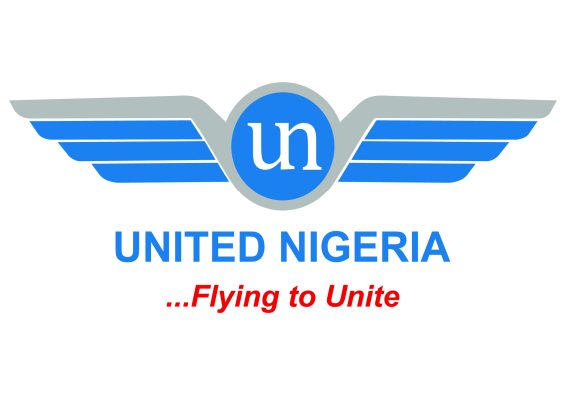Sirika’s giant strides in aviation industry

By Ukpono Ukpong
It is no longer news that the confidence of the flying public in Nigeria has further been restored since the inception of President Muhammadu Buhari’s government, following the strong and strict regulatory actions of the Nigerian Civil Aviation Authority (NCAA).
The Federal Government being aware of the potentials that abound in the sector has in the last five years invested a huge amount of resources, especially in the areas of ensuring that all safety protocols are adhered to without compromise.
It is on record that since this administration came on board, there has not been any major accident involving any commercial airlines.
With the support of at least $600 million of GDP in Nigeria from air transport industry, including airlines and its supply chain, as well as spending by foreign tourists supports of $1.1 billion of the country’s GDP, totaling to US $1.7 billion, the FG has taken steps to sustain the benefits from the sector, and this has been evidenced in the approval of N10 billion for the rehabilitation of the Akanu Ibiam International Airport, Enugu and many other developments at various airports across the country.
In total, 0.4 percent of the country’s GDP is supported by inputs to the air transport sector and foreign tourists arriving by air.
According to a recent report released by the International Air Transport Association (IATA), Daily Times gathered that at least 20,000 people are employed in Nigeria by Airlines, airport operators, airport on-site enterprises (restaurants and retail), aircraft manufacturers, and air navigation service providers.
In addition, by buying goods and services from local suppliers the sector supports with another 35,000 jobs On top of this, the sector is estimated to support a further 16,000 jobs through the wages it pays its employees, some or all of which are subsequently spent on consumer goods and services.
Foreign tourists arriving by air to Nigeria, who spend their money in the local economy, are estimated to support an additional 169,000 jobs.
In total 241,000 jobs are supported by air transport and tourists arriving by air. In a recent interview with the Minister of Aviation, Hadi Sirika, he hinted on some of the achievements recorded by the Ministry which include, Growing and Sustaining the Domestic Aviation Industry; Reintroduction of zero import duties on aircraft, engine and introduction of same for spare parts.
“There are different ways of measuring air transport’s impact on an economy. We look at three: the jobs and spending generated by airlines and their supply chain, the flows of trade, tourism and investment resulting from users of all airlines serving the country, and the city pair connections that make these flows possible.
All provide a different but illuminating perspective on the importance of air transport.
“This administration has ensured a safe and competitive aviation industry resulting in the growth of the sector.
The sector recorded an average growth of 33 per cent on domestic operations and 13.5 per cent on international operations between January, 2017 and June, 2018.
This is also unprecedented in this country. “Also, we provided the enabling environment for domestic airlines in the country to attain certification in the IATA Operational Safety Audit (IOSA).
Currently five Nigerian domestic airlines have Certification, while we also designated some of them for international operations.
“The certification of Murtala Muhammed International Airport, (MMIA) Ikeja, Lagos in April, 2017 and Nnamdi Azikiwe International Airport, Abuja in November, 2017 was a milestone and the first ever Airport certification in Nigeria for that matter.
“Let it be known that the certification of the two airports by NCAA placed Nigeria on the pivot of aviation on the continent as no country in Africa has two of its international airports certified.
Also, the certifications of Kano and Port Harcourt Airports have reached advanced stages and would be achieved this year.
“Also, this administration promulgated the new Nigerian Civil Aviation Regulation, which took effect in July, 2016.
Nigeria achieved an effective implementation level of 67.36 per cent during the recent International Civil Aviation Organisation (ICAO) Universal Safety Oversight Audit Programme carried out in March, 2016, which is above global average of 63.54 per cent. Nigeria also recorded 96.45 per cent in ICAO Universal Security Audit.
“In the areas of State Safety Programmes, Nigeria has attained Level 3 out of 4 levels, thereby moving Nigeria from red to green on the ICAO dashboard.
In line with ICAO and WMO standards, in July 2017, the Nigerian Meteorological Agency acquired ISO 9001 2015 certificate, which qualifies it to offer aeronautical meteorological services.
The agency became the first in Africa to be so certified in that category. “We have completed the Kano Tower Automated Air Traffic Management and Meteorological Systems, installed the Instrument Landing Systems (ILS) Category II (CAT II), Doppler VORs (DVORs), Distance Measuring Equipment (DMEs) at four airports; Lagos, Kano, Port Harcourt and Kaduna completed, while that of Minna, Jos, Yola, Maiduguri, Benin and Akure are still on-going and nearing completion. Also, we have installed the Very High Frequency (VHF) radios for aerodrome and approach air-ground communication in 18 airports nationwide.
The airports are Maiduguri, Enugu, Jos, Calabar, Yola, Ilorin, Sokoto, Lagos, Kano, Abuja, Port Harcourt, Ibadan, Zaria, Katsina, Owerri, Yola, Calabar and Kaduna.
“Besides, we have installed the high power Very High Frequency (VHF) stand-alone radios in Lagos and Kano Area Control Centres (ACC) as backup for air ground upper airways voice communication and we also embarked on the deployment of Controller-Pilot-Data Link Communication (CPDLC) in Lagos and Kano to enhance communication in the oceanic region and the remote areas of the north.
“Commencement of Aeronautical Information Management Automation Project, which comprises a network of 26 VSAT facilities at all Nigerian airports as well as Search and Rescue (S&R), with coordination domiciled in Lagos.
This will enable Nigeria to comply with the mandatory transition from Aeronautical Information Service (AIS) to Aeronautical Information Management (AIM).
We also developed and published Performance-Based Navigation (PBN) Procedures for 18 airports across the country and also introduced Standard Instrument Departures (SIDs) and Standard Arrival Routes (STARs) at Lagos, Abuja, Kano and Port Harcourt as an improvement on the procedures.”
It could be recalled that nearly three years ago, the Nigerian Airspace Management Agency (NAMA) Installed CAT III Instrument Landing System in Lagos and Abuja, which has helped in great deal to improve operations during inclement weather conditions.
On airport development, the Minister said the passengers have continued to commend the FG for its commitment to complete all the projects met on ground following the commissioning of the Port Harcourt International Airport, Omagwa and the Nnamdi Azikiwe International Airport, Abuja by President Buhari.
Investigation has shown that Enugu airport is at an advanced stage of completion, while development is ongoing at different airports across the country.
“We reconstructed the Abuja runway and undertook isolated repair of the taxiway and apron, including complete remarking of the entire pavement and associated airfield lighting system.
We streamlined various security screening points at the international airports in line with the Executive Order on Ease of Doing Business.
This government also installed solar airfield lighting at 10 airports; Akure, Port Harcourt, Sokoto, Yola, Kaduna, Minna, Enugu, Maiduguri, Jos and Ibadan.
We also completed a 1300-capacity multistorey car park at the international terminal in Lagos through the Public Private Partnership (PPP) and the construction of Wing D Terminal at Abuja Airport.”
According to the minister, the Nigerian College of Aviation Technology (NCAT), Zaria through the various interventions of the FG has been designated as ICAO Regional Training Centre of Excellence and it is one of the foremost institutions to be so designated on the continent.
“Being an ICAO Regional Training Centre of Excellence (RTCE), it means recognition by ICAO as a regional training leader, it has the right to develop and deliver ICAO Training Packages (ITP’s) in all the annexes and generation of revenue through the selling of Standard Training Packages.
“In the same vein of capacity development, FAAN Training Centre was designated as ICAO Aviation Security Training Centre of Excellence in October 2018 and the training centre was commissioned in December 2018.
READ ALSO: Experts list path to Nigeria’s aviation sector revival
So much has been done and we are not resting on our oars because whatever is being done is to the benefit of our people and thanks to Mr. President for the support he has given the sector over the years.”
Also, in the build up to the reopening of the airports, the FG took a deliberate step to curb the spread of COVID-19 in the country, by deploying profiling robots at Nnamdi Azikiwe International Airport, Abuja and the Murtala Muhammed International Airport, Lagos.
According to the Minister, the robots are to be used for passenger facilitation processes including profiling, check-ins, temperature checks as well as detection of security threats including dangerous goods and arms.








